6 Curious Defense Mechanisms in Insects
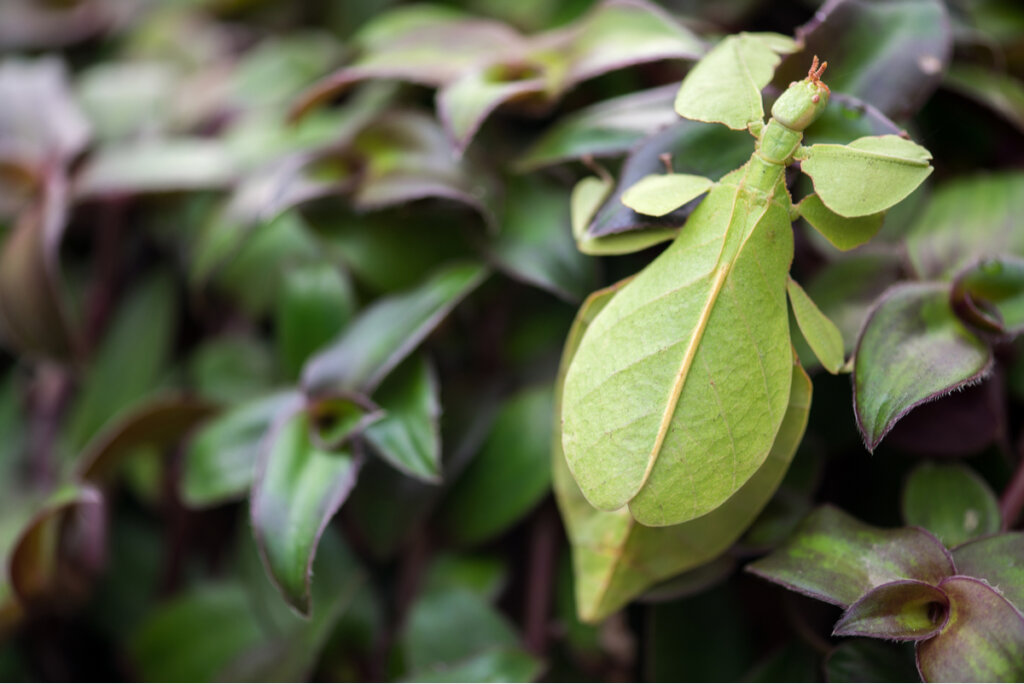
Living in freedom isn’t a bed of roses, and even less so for animals that are usually the prey of the food chain. Evolution has gifted us with true works of art when it comes to defense mechanisms.
From camouflage to unique ways to repel a predator, in this article you’ll read about the most curious examples of defense mechanisms in the animal world. Don’t miss it.
1. Orchid mantis (Hymenopus coronatus)
The morphology of this mantis almost perfectly mimics the shape of a flower: so much so that its legs have a petal arrangement and its body varies in colors, ranging from yellow to pink. Entomologists who study this species say that it’s difficult for them to find the mimicked specimens even in captivity.
The mimicry of the orchid mantis isn’t only its mechanism to go unnoticed, but also its weapon. Indeed, its flower shape also attracts pollinating insects, which will eventually become its food.
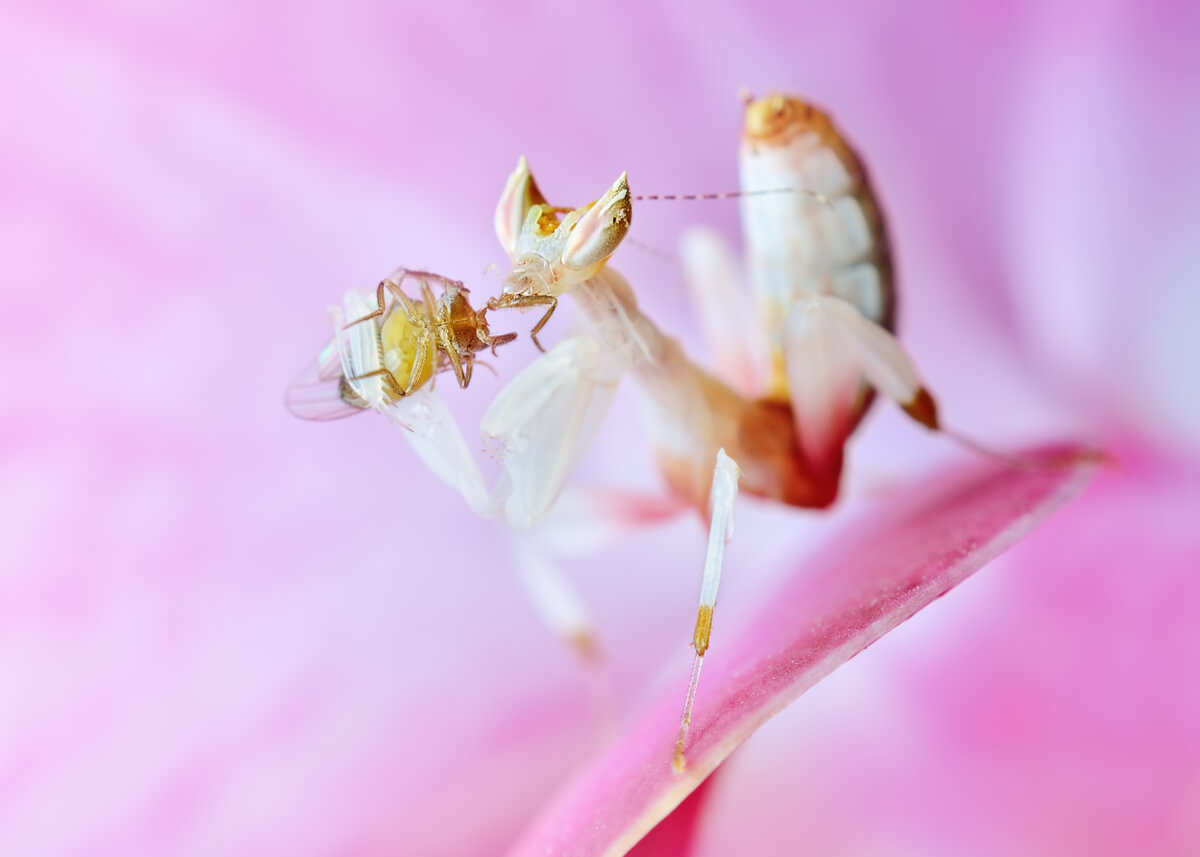
2. Masters of mimicry: defense mechanisms of the leaf insect
The mimicry of the genus Phyllidae – or leaf insects – is astonishing whatever species it is. When sitting on a plant, this invertebrate won’t only be indistinguishable due to the shape of its body, but it’s also capable of imitating the movement of leaves when swayed by the wind.
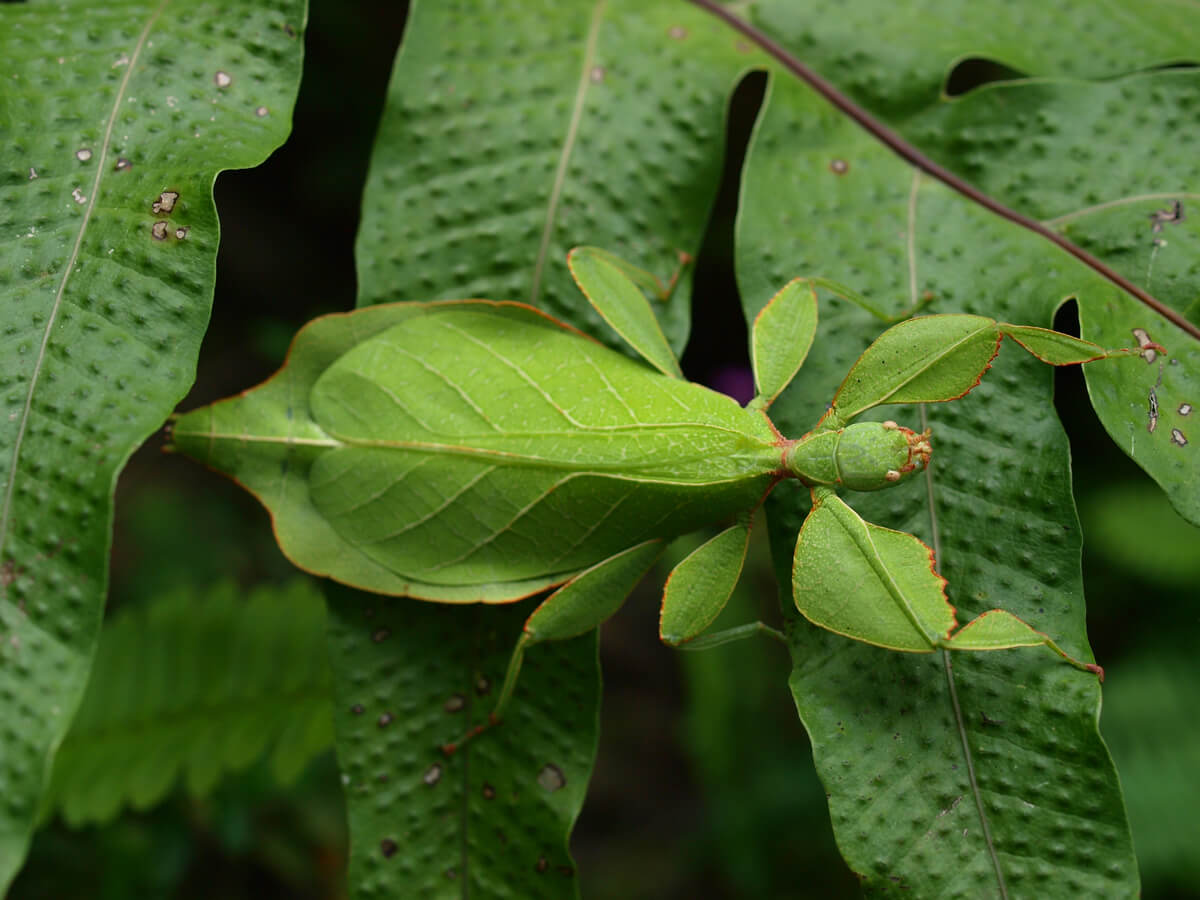
3. Ants (Formica selysi)
Faced with external threats, many insects and arthropods have to work together to overcome them. It’s not always about predators: when you’re very young, the environment can also be your worst enemy.
This species of ant suffers a lot when there are floods inside their ant hills, which are washed away by water currents. For this reason, the members have developed a technique that guarantees the continuity of the colony: the workers are chained to form a floating raft that carries the queen and the larvae inside.
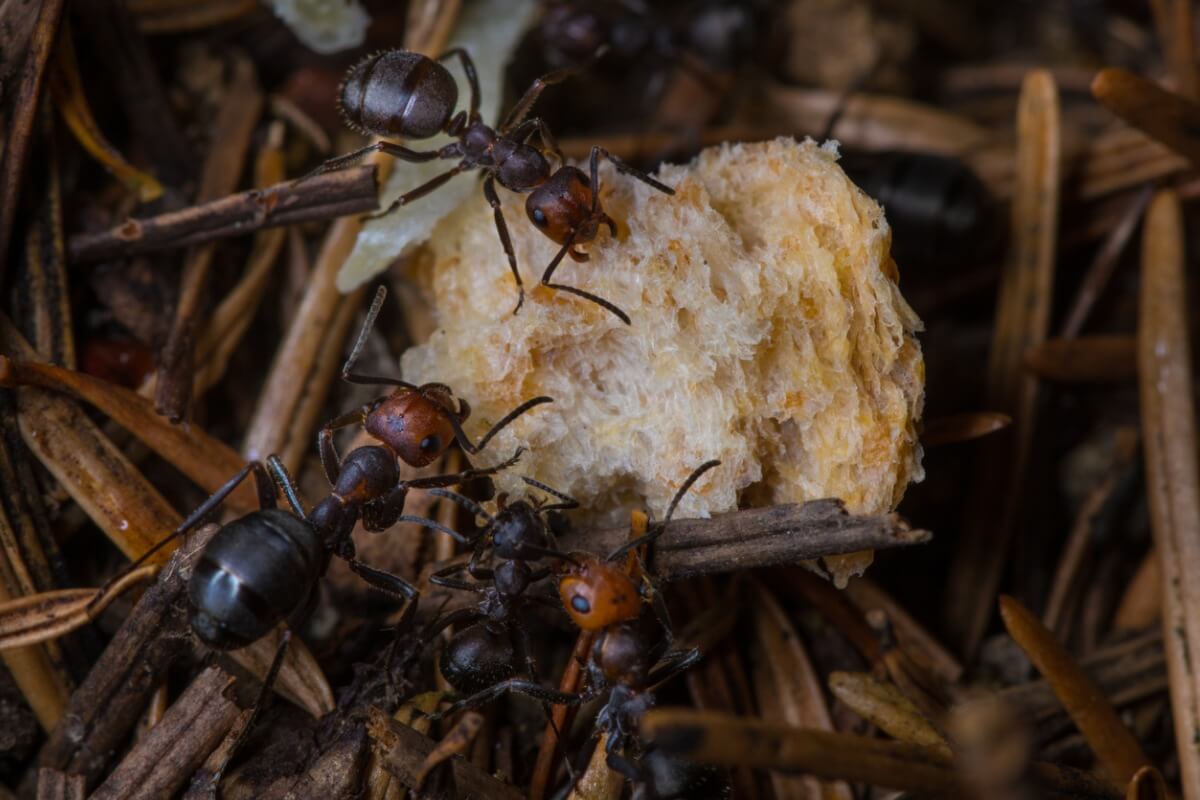
4. Bees: defense mechanisms that require teamwork
When it comes to defending the hive, bees are great strategists as well as relentless fighters. A curious example is that of the Asian bee ( Apis cerna japonica ), whose guardians form a “ball” around the intruder, surrounding it until they kill it with the heat of their bodies. They literally cook it!
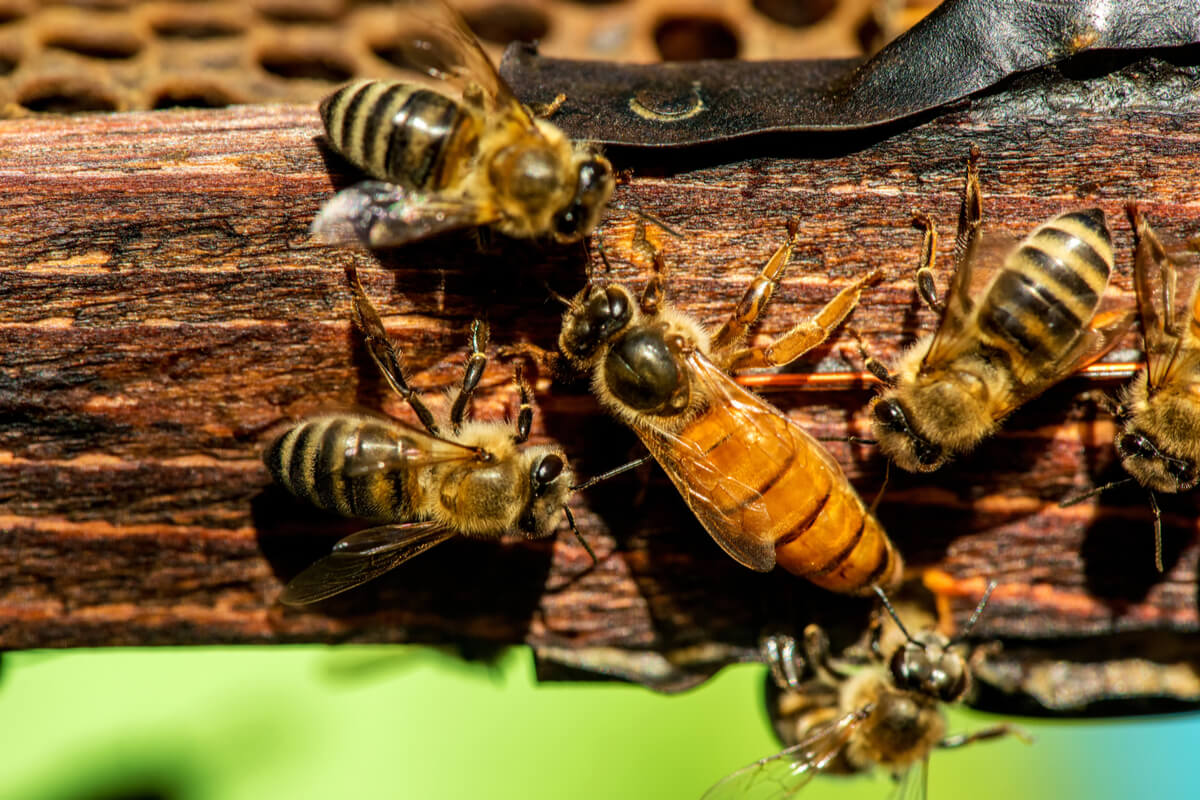
5. Diving bell spider (Argyroneta aquatica)
Although it’s an arachnid and not an insect, we couldn’t miss this spider off our list. This amazing animal has developed a way of life that allows it to eat and protect itself at the same time, with the exception that it’s capable of living underwater.
The diving bell spider weaves its web underwater, forming an air bubble where it spends most of its time. However, this isn’t even the most incredible thing. The oxygen inside the bubble is renewed automatically, as it exchanges gases with the surrounding water when it’s consumed.
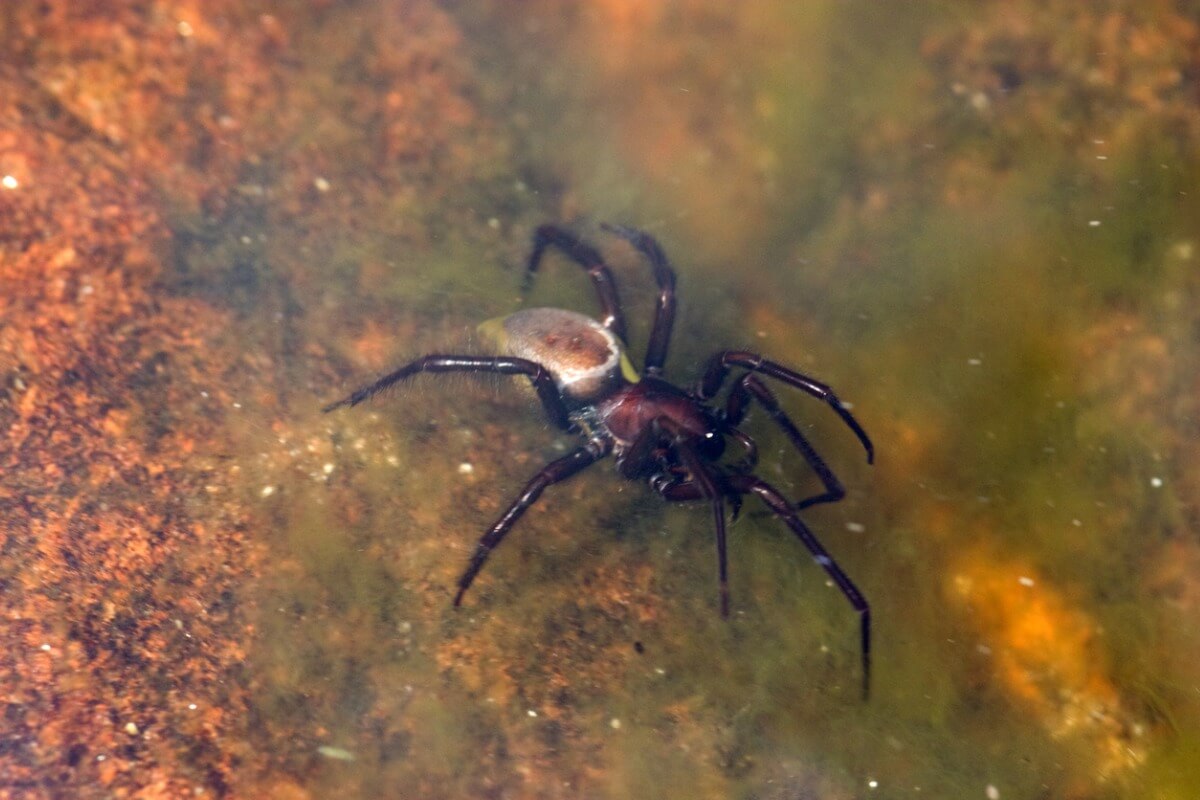
6. Dry leaf butterfly (Gastropacha quercifolia)
As you’ve already read, pretending that you’re part of the environment is one of the best defense mechanisms around. Of course, you don’t have to defend yourself if they can’t find you!
This is the case of the dry leaf butterfly, a moth that lives in the deciduous forests of Europe and Asia. Among oaks, holm oaks and fruit trees, these vegetables create a mass of leaves on the ground that’s the perfect canvas for this butterfly. Both the shape of its wings and its coloration make it indistinguishable from its surroundings.
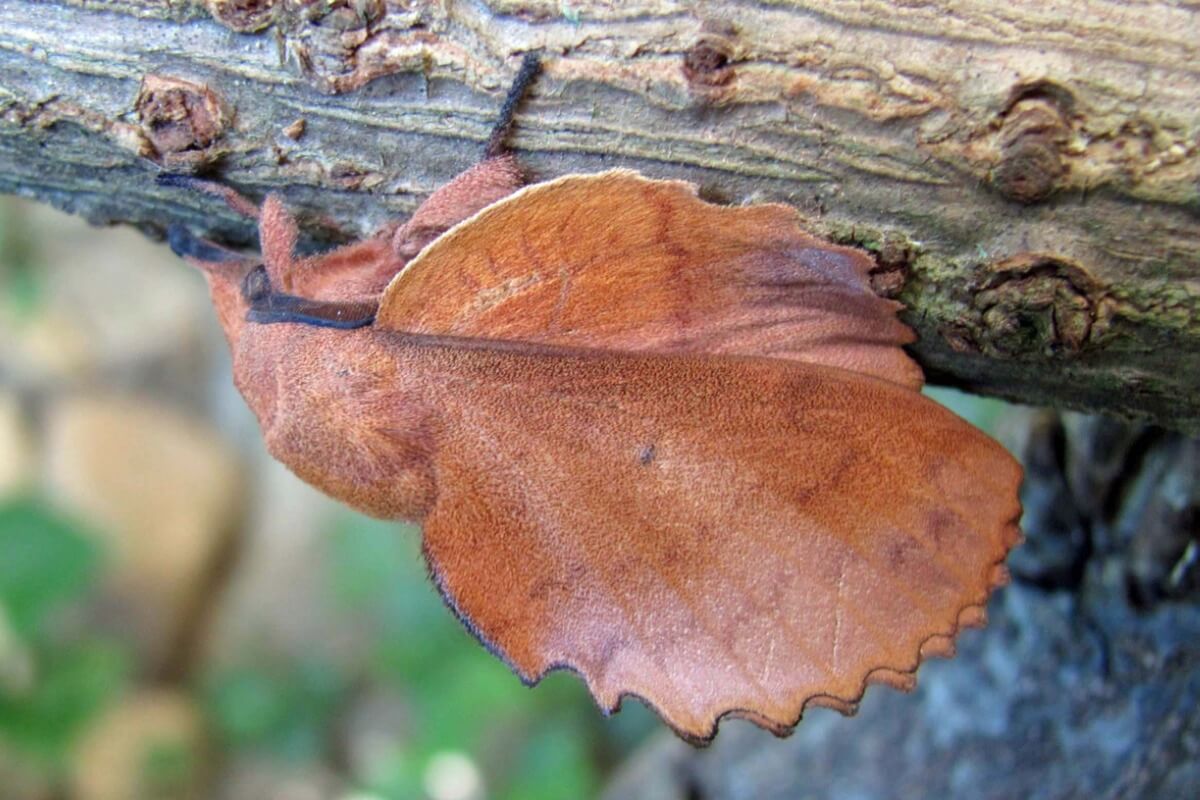
Insects and arachnids have been the food of the largest animals for millions of years. For this reason, many of its defense mechanisms have inspired humans. Getting to know them isn’t only beneficial to satisfy our curiosity, but it’s also a lesson in survival.
All cited sources were thoroughly reviewed by our team to ensure their quality, reliability, currency, and validity. The bibliography of this article was considered reliable and of academic or scientific accuracy.
- EcuRed. (2021). Mantis orquídea – EcuRed. https://www.ecured.cu/Mantis_orqu%C3%ADdea
- Purcell, J., Avril, A., Jaffuel, G., Bates, S., & Chapuisat, M. (2014). Ant brood function as life preservers during floods. PloS one, 9(2), e89211.
- Ugajin A, Kiya T, Kunieda T, Ono M, Yoshida T, Kubo T (2012) Detection of Neural Activity in the Brains of Japanese Honeybee Workers during the Formation of a “Hot Defensive Bee Ball”. PLoS ONE 7(3): e32902. https://doi.org/10.1371/journal.pone.0032902
- Gastropacha quercifolia (Linnaeus, 1758) in De Prins J, Heughebaert A (2019). Afromoths, online database of Afrotropical moth species (Lepidoptera). Version 1.7. Belgian Biodiversity Platform. Checklist dataset https://doi.org/10.15468/s1kwuw accessed via GBIF.org on 2021-04-27.